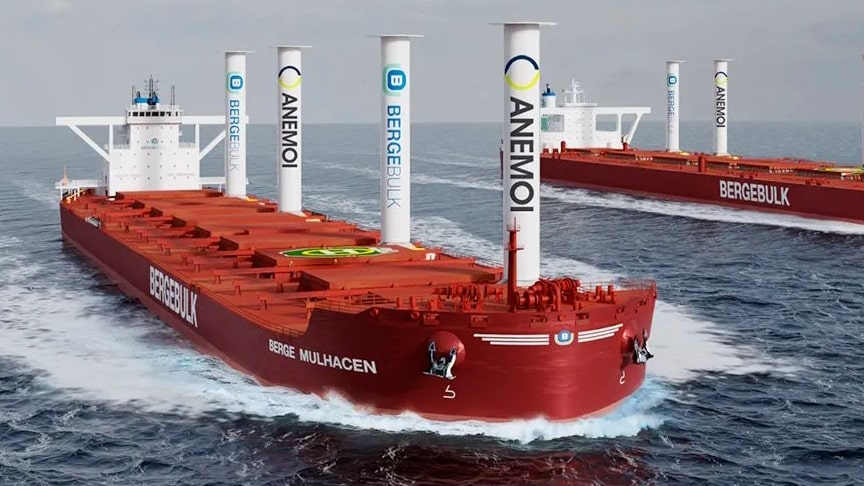Watch the Anemoi Rotor Sail (Flettner Rotor) System operating on board the MV Afros in the South China Sea. Rotor Sails harness power from the wind to help propel ships, enhancing vessel efficiency and reducing harmful emissions by up to 30%.
source/image: anemoimarine
Rotor Sails have demonstrated increased vessel efficiency, reducing fuel consumption, bunker costs and harmful emissions. Compared to other wind propulsion technologies, Rotor Sails offer a much greater thrust force to propel the ship per square metre of sail area. This means they can be made more cost effectively and with less impact on vessel operation than traditional sails or wings.
Anemoi Rotors are designed to withstand the most severe weather conditions, in line with Class Requirements. Our Rotors can operate in heavy seas and wind speeds of up to 35m/s (70kts). In extreme conditions outside of the operating limits of the Rotor Sails, they automatically turn off.
Advertisement
Unlike other wind technologies, reefing is not required.For installation on vessels with hazardous zones (e.g. Tankers and Gas Carriers), Anemoi offer an EX-Rated Rotor Sail option.The Rotor Sails are driven to rotate by a motor. When a wind flow meets the spinning Rotor Sails, a pressure differential is created.
This causes a thrust force which provides auxiliary propulsion to the vessel and can be used to increase the vessel speed or reduce the consumption of the main power unit.Anemoi Rotor Sails are manufactured from highly engineered lightweight composites to achieve excellent performance with minimised additional weight. At the heart of the Rotor Sail is a strong steel tower which carries all the loads safely into the ship structure.The size and number of Rotor Sails installed is determined by vessel size, available deck space and operating profile.











